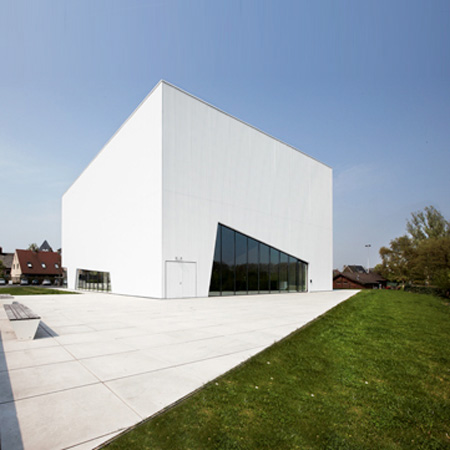
Community Centre by Dierendonck Blancke
Photographer Julien Lanoo has sent us his photographs of a community centre near Avelgem, Belgium, designed by Belgian architects Dierendonck Blancke.
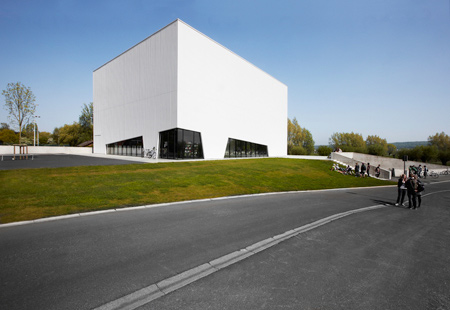
Dierendonck Blancke collaborated with architects Stefaan Onraet, Tom Callebaut and Jonas Desmyter to design the centre, built on an existing slope on the border of a nature reserve in a small village.

The concrete building consists of a theatre, a multi-purpose hall and a cafe for a local youth organisation, with a large open-air terrace.
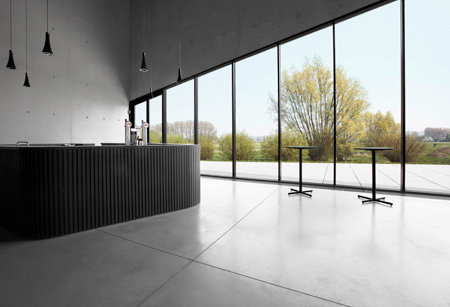
The theatre is situated on the first floor and can accommodate up to 305 people.
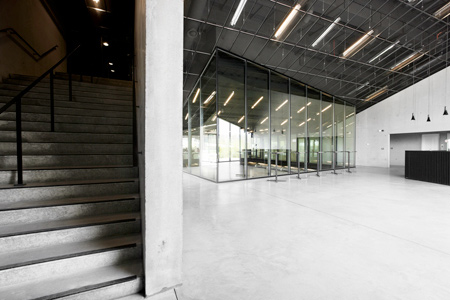
The foyer and administration is on the ground floor. Seating is located near the irregularly-shaped windows, overlooking the nature reserve.
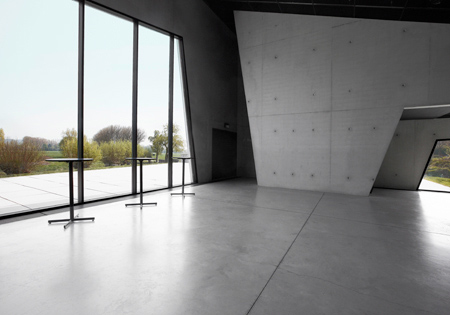
In the sunken basement there is a hall that holds 700 people and a cafe for a local youth organisation, accessed by ramps cut into the ground.
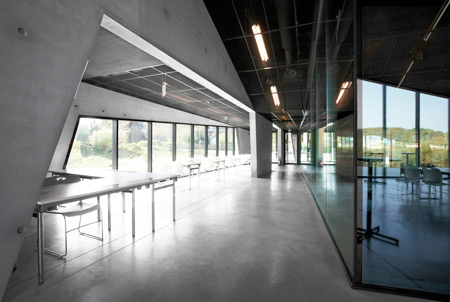
Here's some information from the architects:
--
The project is situated in a small village in Belgium.
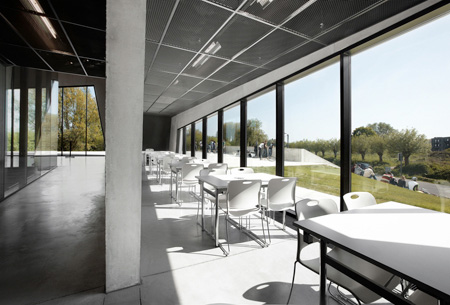
The site is on the border of a protected natural reserve on one side and near the village centre and community church on the other side.
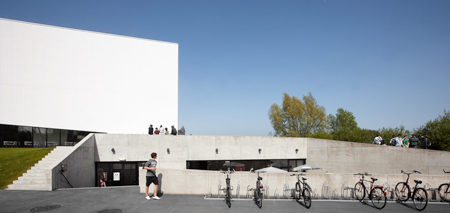
Our aim was to construct a compact building.
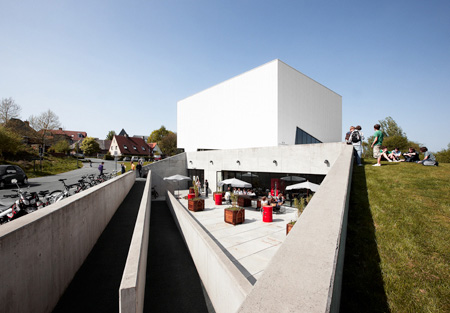
By stacking the functions and using the existing slope of the site we could do this. In this way the footprint of the building was reduced and space was preserved for open air activities. This also means less foundation on an unstable underground.
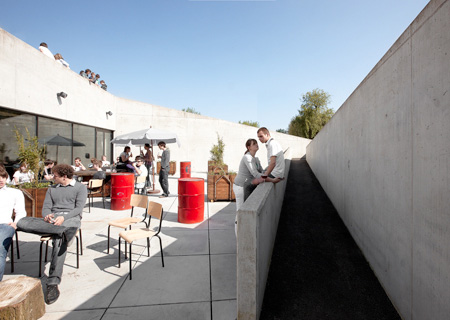
The building is positioned on the border of the site to create as much as possible distance between the public building and the dwellings nearby.
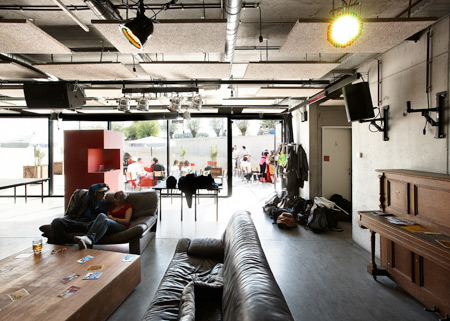
The program consists of a theatre (305p) on the first level, a multifunctional hall (700p) and café (150p) for a local youth organisation in a partially sunken basement. Foyer and administration are in between on the ground floor level.
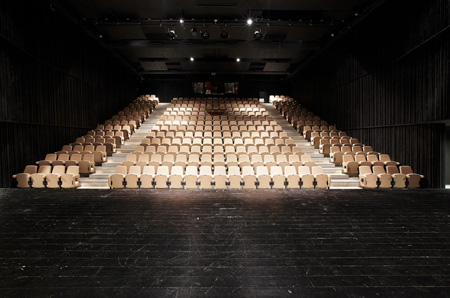
All interventions and design decisions were taken to combine the different parts of the program in one dense building in order to reduce maximally the build surface as the budget was restricted.
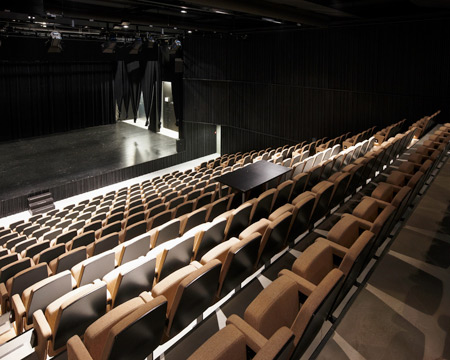
We proposed a multifunctional use of different entrances that allow an easy use for the owner. By combining rescue exits and entrances we reduced the circulation. The ratio between circulation and used space is very low.
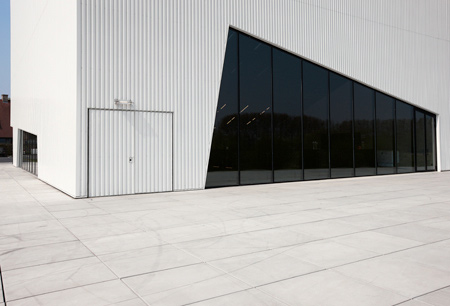
The building consists of two clearly distinctive parts: a main volume that expresses certain monumentality next to the nearby church and a supporting base integrated in the landscape.
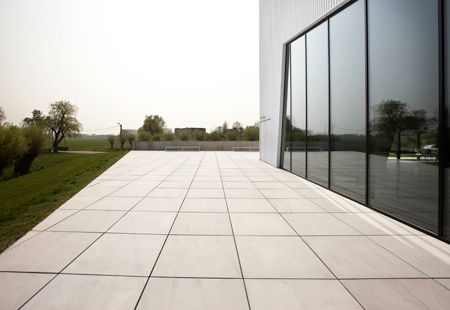
The partially integrated basement is made accessible by two large incisions in the landscape so that it is experienced as an underground construction.
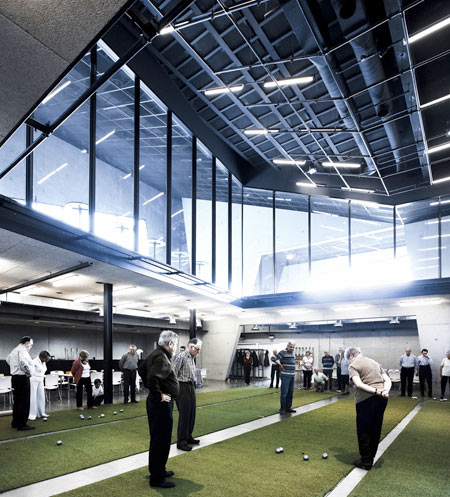
On the upper Floor in the main volume is the theatre, internally designed as a functional black box, in which all attention can go to the play. The basic acoustic comfort is designed so that a polyvalent use is possible.
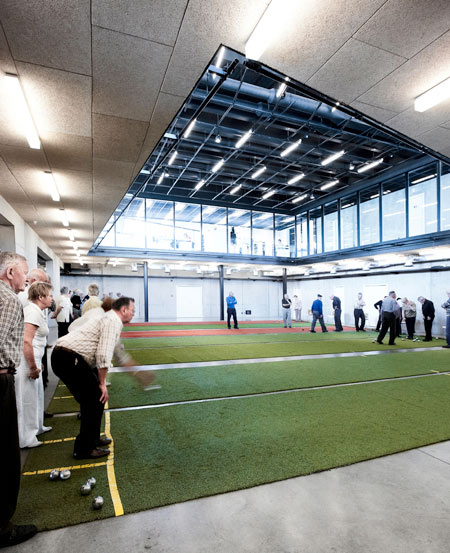
The foyer on the ground floor provides access to the theatre on the upper floor and the multifunctional hall in the basement. In this in between position beneath the slope of the theatre there is a visual relationship with the multifunctional hall by a large void.
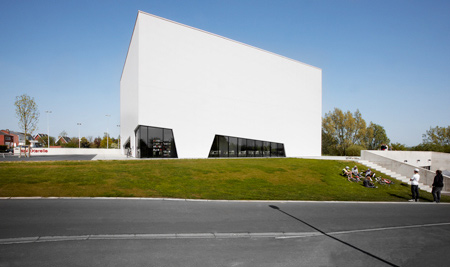
This void also provides the basement of daylight through the foyer and realises an important height under the ceiling in the multifunctional hall The lobby and administration are considered as an acoustical buffer to the outside (nearby housing).
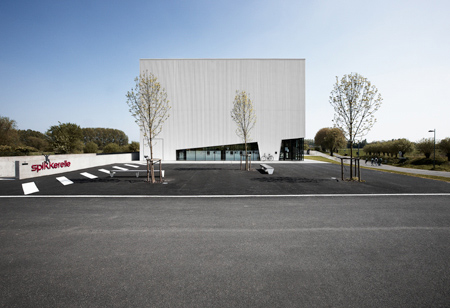
The expensive glazed acoustic buffer was filled program. By day local organisations can use the space without the feeling of being in a underground space, by night techno parties can take place without disturbing the neighbours.

Access and rescue exits for the multifunctional hall and youth café are made possible by two incisions in the landscape.
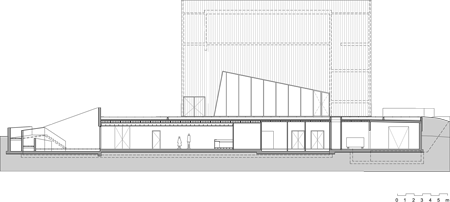
Click for larger image
The youth café is independent and has a large sunken private terrace.
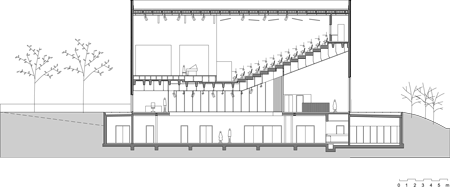
Click for larger image
A lot of attention went to detailing and the use of a limited use of materials with a certain brutality.
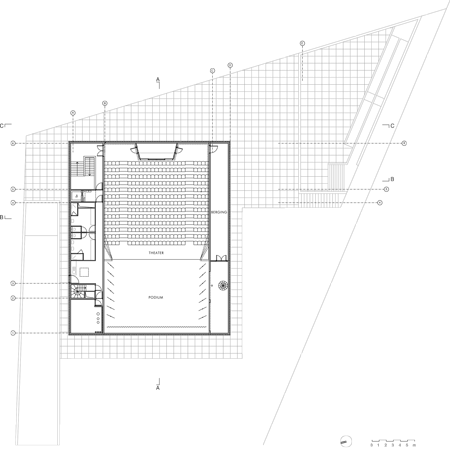
Click for larger image
The building is considered as a tool with a strong image, a flexible use and a neutral background for different activities.
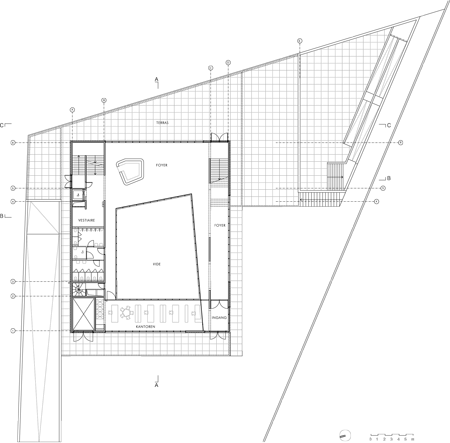
Click for larger image
DIERENDONCKBLANCKE ARCHITECTEN
Design team: Dierendonckblancke architects in collaboration with Stefaan Onraet - Tom Callebaut -Jonas Desmyter
Surface: 2.370 m2
Cost: 3.600.000 euro (excl. BTW)
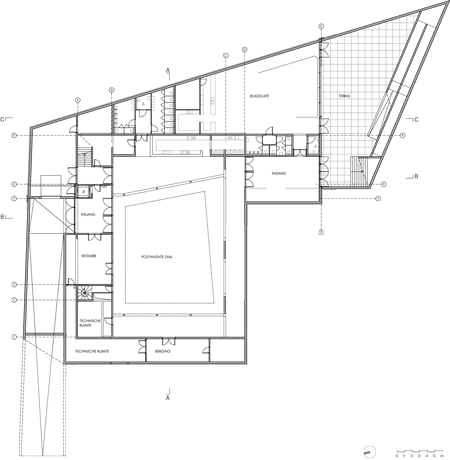
Click for larger image

Click for larger image
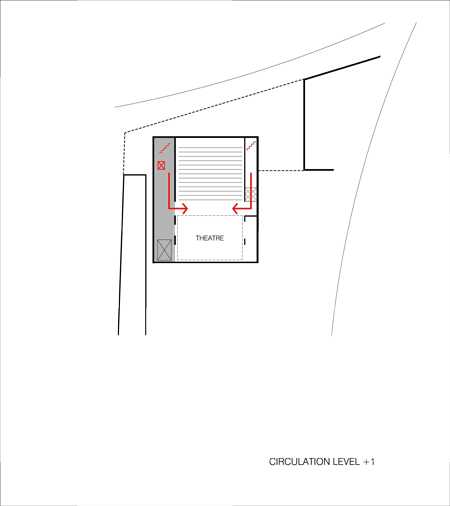
Click for larger image
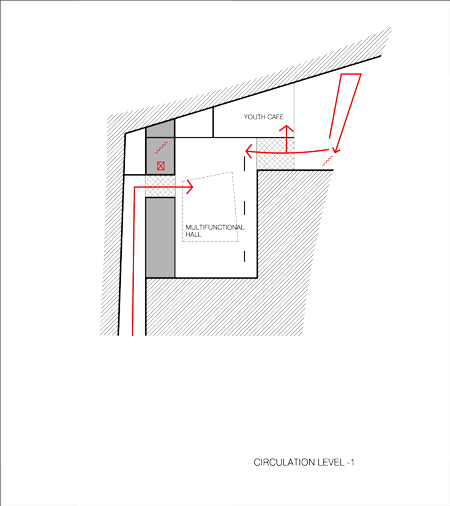
Click for larger image
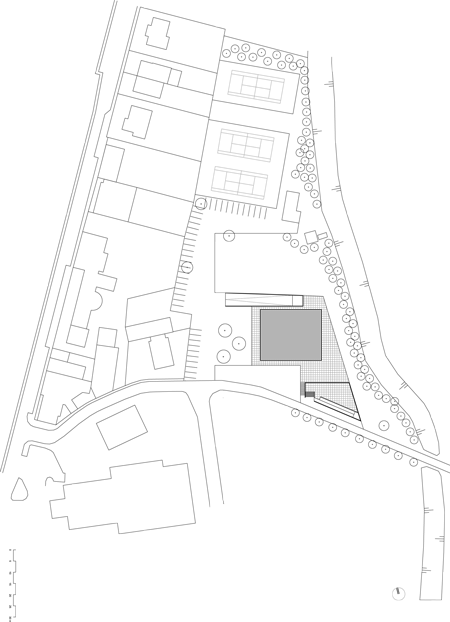
Click for larger image
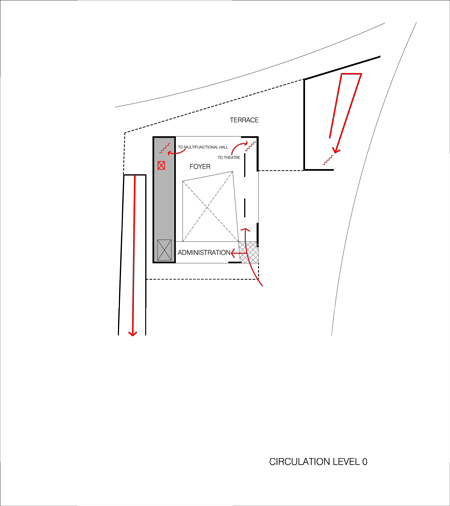
Click for larger image